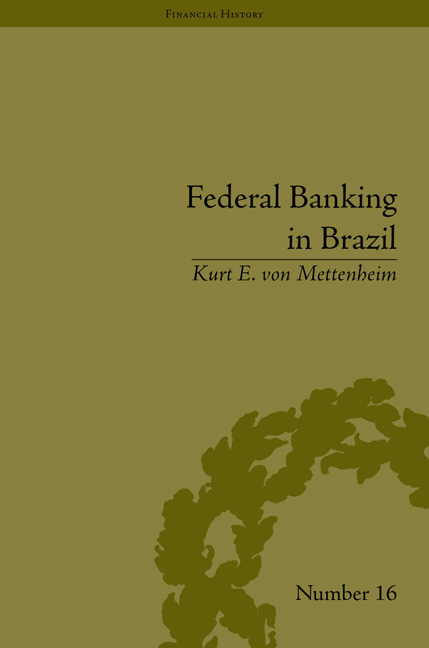Book contents
- Frontmatter
- CONTENTS
- Acknowledgements
- List of Figures and Tables
- Introduction
- 1 Government Banking Theory
- 2 Bank Change in Brazil
- 3 The Banco do Brasil – with Maria Antonieta del Tedesco Lins
- 4 The Caixa Economica Federal (Federal Savings Bank)
- 5 The Banco Nacional de Desenvolvimento Econômico e Social (National Bank for Economic and Social Development, BNDES)
- Conclusion
- Notes
- Works Cited
- Index
Introduction
- Frontmatter
- CONTENTS
- Acknowledgements
- List of Figures and Tables
- Introduction
- 1 Government Banking Theory
- 2 Bank Change in Brazil
- 3 The Banco do Brasil – with Maria Antonieta del Tedesco Lins
- 4 The Caixa Economica Federal (Federal Savings Bank)
- 5 The Banco Nacional de Desenvolvimento Econômico e Social (National Bank for Economic and Social Development, BNDES)
- Conclusion
- Notes
- Works Cited
- Index
Summary
The elementary truths of political science and statecraft were first discredited, then forgotten.
Karl Polanyi, The Great Transformation (New York: Farrar and Rinehart, 1944), p. 33Government banks make sense. As banks, they retain competitive advantages because of greater client confidence and unbeatable brand names such as the Banco do Brasil. As policy instruments, they provide branch offices, automated teller machines and mobile services over cellular phones to reach citizens. Their staff can manage complex information about local needs, measure costs, benefits and risks, and assert contractual control to correct public policies before they run astray. Government banks provide large policy levers for political leaders and social forces. These institutions are often large enough to provide countercyclical credit to avert or ameliorate recessions. Federal banks may implement reforms such as privatizations and public sector modernization through ‘IMF-like’ conditional loans to sub-national governments. In the past, directed credit from government banks drove rapid industrialization in late-developing countries. Such policies continue in many emerging, transition and developing nations. But government banks do much more than direct industrial change. Government savings banks have served local communities across Europe, some for centuries, to emerge after liberalization of the industry and monetary union with increased market shares and renewed social mandates. Brazilian federal banks have also emerged from military rule, abuse by traditional elites during prolonged transition, monetary disorder and financial crises to shape development and democracy. Three big banks, a commercial-investment bank, a savings bank and a development bank provide over a third of domestic credit in twenty-first-century Brazil.
- Type
- Chapter
- Information
- Federal Banking in BrazilPolicies and Competitive Advantages, pp. 1 - 4Publisher: Pickering & ChattoFirst published in: 2014

